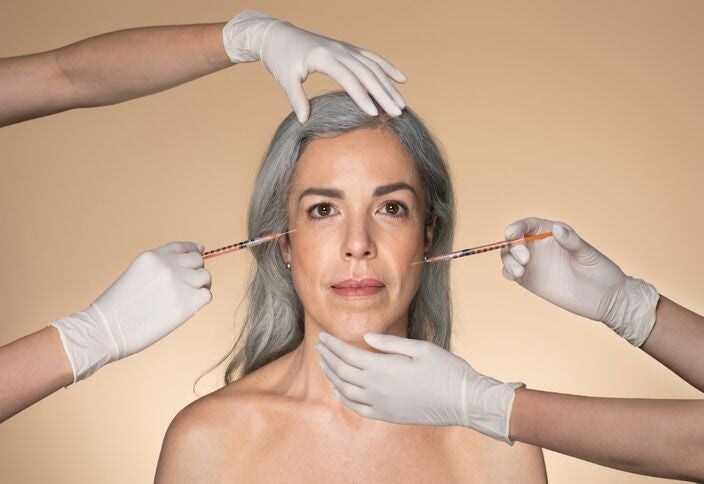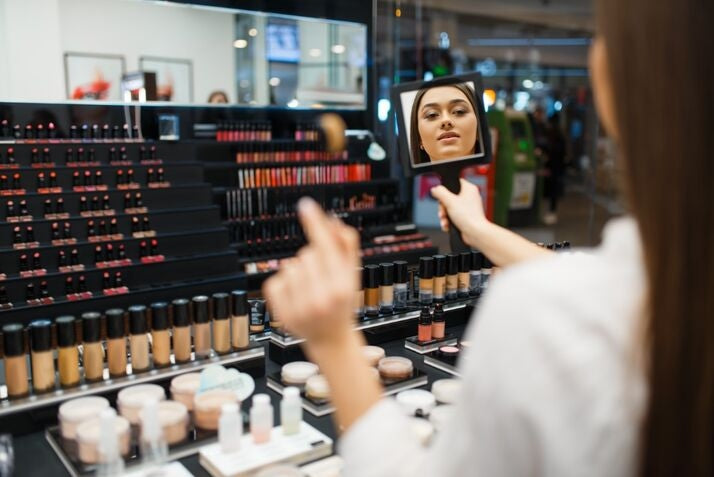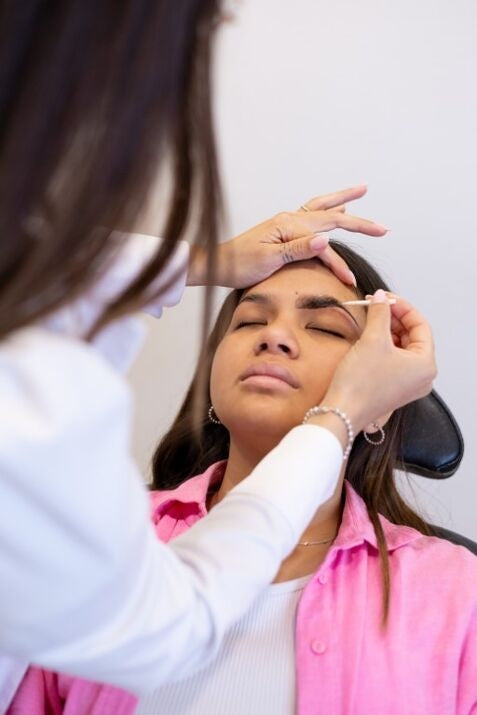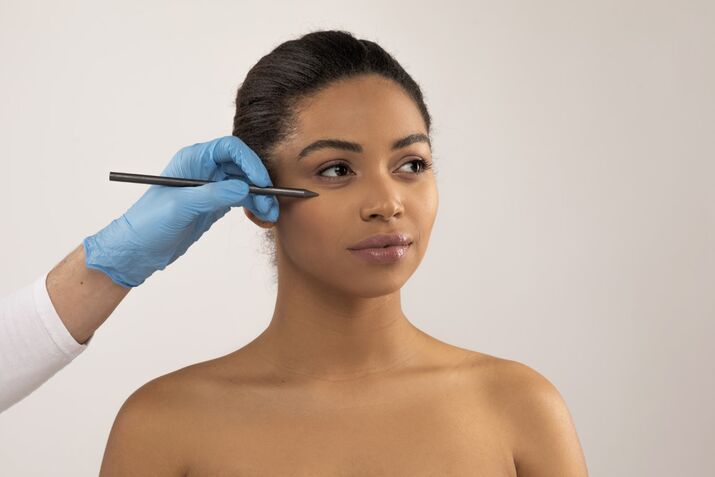Beauty Standards in 2024: Is Plastic Surgery Ruining Individuality?
By Alayah Brantley & Amaya Determann
By Alayah Brantley & Amaya Determann
In a world obsessed with perfection, many women feel pressured by social media to conform to unrealistic beauty standards.Countless filters, fillers, and procedures can alter the image of people online and in-person. In today's blog, we will explore the history of beauty standards, the truth behind celebrity images, and the complex relationship of beauty standards and self-image. The rise of the internet and social media have completely changed the way our society views beauty: It seems like we are constantly bombarded with new desirable features and beauty trends. Plastic surgery is now commodified into trend cycles. But these fads don’t stop at make-up or fashion; buccal fat removal, masseter jaw surgery, and eyebrow thread lifts are more recent trends that are already on their way out.
Plastic surgery does vary based on cultures; for example, Americans have spent $16.7 billion on plastic surgery in 2020. There were 3.4 million soft tissue filler procedures and almost a million-laser skin resurfacing procedures. According to the report, which was released by the American Society of Plastic Surgeons, 11% of women are more interested in cosmetic plastic surgery and non-surgical procedures now than prior to the pandemic. South Korea is the Nation with the most cosmetic procedures per capita. One study found A direct correlation between self-esteem and plastic surgery amongst South Korean participants. There are direct cultural beliefs regarding appearance as well as societal pressure comprised from beauty ideals of those in South Korean media
Social Media's Influence on Beauty Standards
To clarify, by no means should there be any condemnation for those who choose to undergo cosmetic procedures. Plastic surgery often helps individuals feel more confident and comfortable in their own bodies. The argument here is about the standardization of beauty threatening individuality.
The term “Instagram face” refers to the specific features and look of influencers and models on the platform. It is important to note, however, that many of these images are edited or created with a filter. In some cases, these images lead individuals to turn to plastic surgery to look like the filter or the edited picture. As society changes so do the means of how and when these standards. But body and facial modification have been around for millennia.

A BRIEF LOOK AT THE HISTORY OF BEAUTY STANDARDS
We can look back into ancient times through art and historical text to learn how beauty standards have morphed over the years. For example, a slender figure with narrow shoulders and a high waist was popular in ancient Egypt, around 1200 B.C. Fast forward a few hundred years to 500 B.C., and the ancient Grecians preferred a more plump, full-bodied look. The Han Dynasty, from 206 to B.C. to 220 A.D., brought back the preference for a slim waist and prioritized big eyes and small feet. By 1400 A.D., the Italian Renaissance showcases women with rounded stomachs, full hips, and large chests.
As we get closer to the present day, we can see beauty standards changing much more rapidly. In the 1920s, women were doing whatever they could to get a flat chest and boyish figure. By the 1950s, a curvy, hourglass figure with a large bosom was all the rage as Marilyn Monroe rose to fame. The 90s are notorious for heroin chic – a focus on extreme thinness popularized by supermodels on the runways of this time. This led way to a widespread, toxic dieting culture as the media and the internet began to grow.
Just thinking about these changes can be exhausting for any woman. As evolving beauty standards challenge the way woman view themselves in society. How is anyone supposed to keep up? However, the urge to look “perfect” in the public eye is now possible, thanks to plastic surgery. Whether you desire the hourglass figure, cute button nose, or youthful appearance. Plastic surgery turns unrealistic cosmetic trends into reality. Giving woman ideas to overanalyze their beauty and conform to social approval. Much like other trends, plastic surgery feeds on self-perception and temporary gratification. Ultimately, leaving its participants unsatisfied and wanting more.

WHO DECIDES WHAT’S BEAUTIFUL?
Antonio Fuente del Campo, MD, the International Editor of Aesthetic Surgery Journal, points out that the Western culture’s beauty standards are just a small part of a larger story. There are different concepts of beauty among different nationalities, from Asians to Latinos and beyond. Still, developed countries are spreading their ideals of “beauty” on a global scale via mass media. As del Campo says, “Presentations at our international congresses demonstrate the interest of patients in changing their original look, not only to become beautiful by the traditional standards of their own cultures, but often to look as similar as possible to the Hollywood star prototype.” Not only are we losing our own individuality, but we’re also losing our appreciation for cultural beauty differences, as well.

In a study from Baltimore’s Johns Hopkins Carey Business School, study participants were asked to rate the attractiveness of random people on a dating website. There were no right or wrong answers, but some people were shown the average score based on what others were saying. As a result, people began scoring people based on what they knew was ranking higher among their peers. Eventually, everyone ranked the same qualities higher than others. This would suggest that people want to go with that status quo. It’s herd mentality – there’s safety in numbers – and it’s exactly why we all want to look like the most popular celebrities.
ON EMBRACING INDIVIDUALITY IN A PLASTIC WORLD
Discovering individualityduring the age of photoshopisn’t an easy task. While embracing natural beauty isn’talways followingthe status quo.There are plenty of beauty hacks that can make your natural features pop. Many tinting products for your eyebrows, lashes, and hair all provide vibrant and lasting results. This gives the illusion of feature enhancements without going under the knife. Sometimes, the best beauty secrets are the very things that make you unique.


With the increase in cosmetic procedures and new medical advancements, there must be a balance between individuality and conformity. Society seems aware of this too, as some doctors predict plastic surgery will shift to emphasize uniqueness and individuality.If we can learn anything from history, it’s this: beauty standards are always changing. There’s no such thing as “perfection,” and the race to reach it is counterintuitive. It’s human nature to want to fit in or discover acceptance.However,the challengeis to look in the mirror and appreciate your individual uniqueness.At the very least, your individuality is what sets you apart.
Read More
-

Skinimalism Is Not “Less Makeup.” It’s Better Taste.
Andrew CampbellSkinimalism makeup isn’t about skipping products—it’s a refined “less is more” aesthetic. Discover how this trend’s focus on healthy skin,...
-

How Water, Chlorine, and Sunlight Affect Your Hair Color
Andrew CampbellLet’s be honest—once you’ve colored or bleached your hair, keeping it vibrant is basically a part-time job. Even with salon-grade formulas and sulfate-free shampoo, the...
-

Upcoming Beauty Trends: What to Look Out For in 2026
Emersen AdamsBeauty in 2026 is less about chasing a single “look” and more about building routines that fit your life and...




